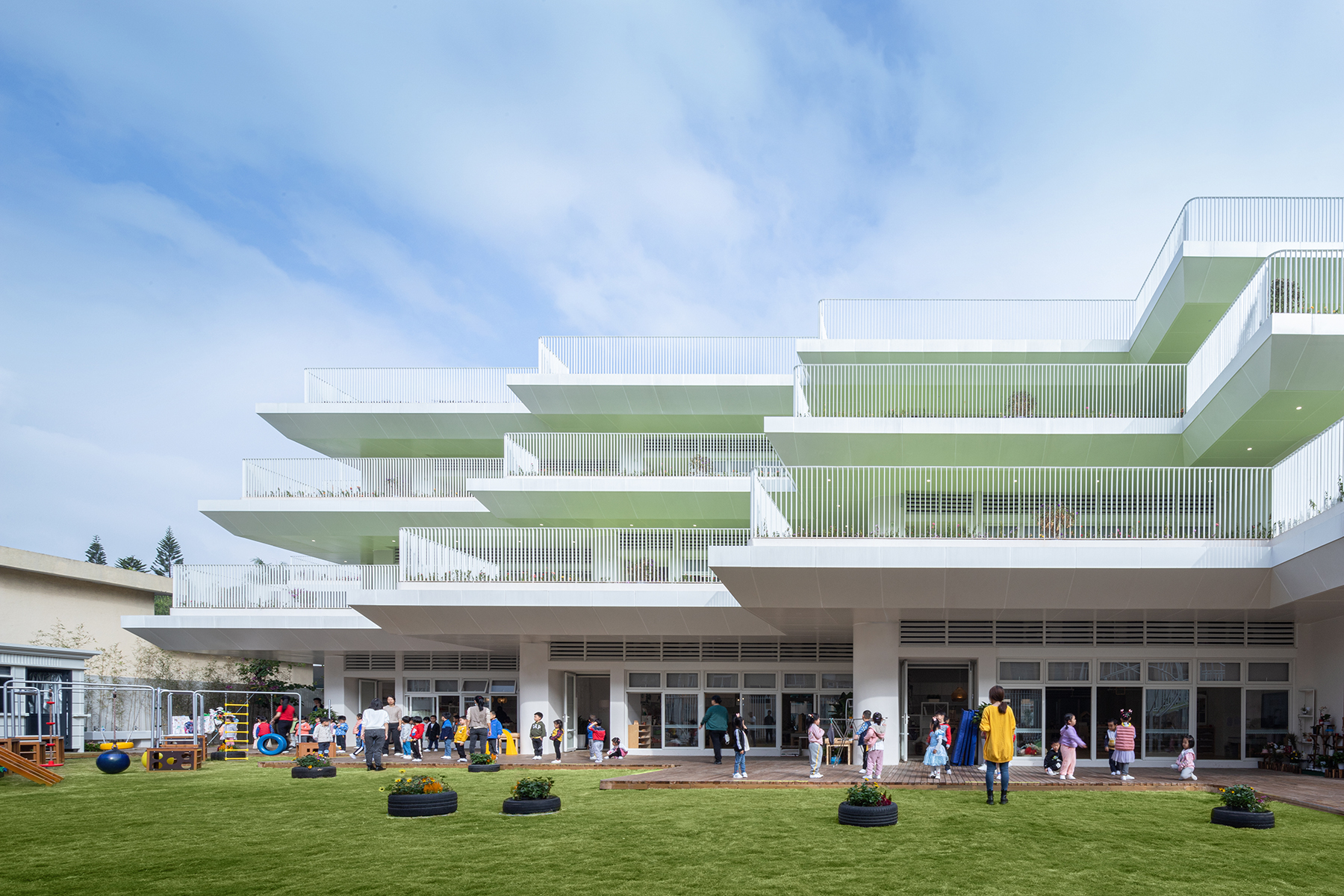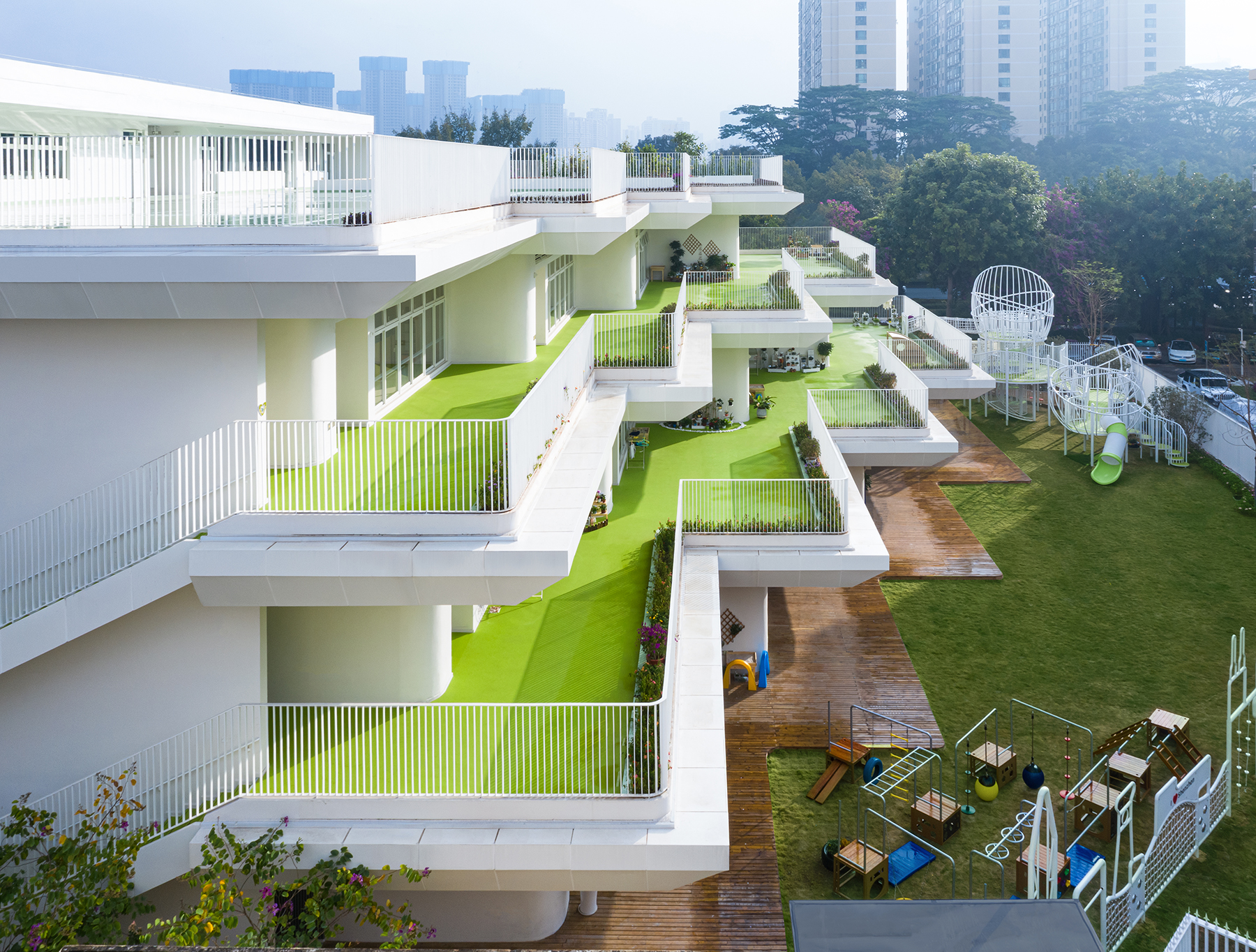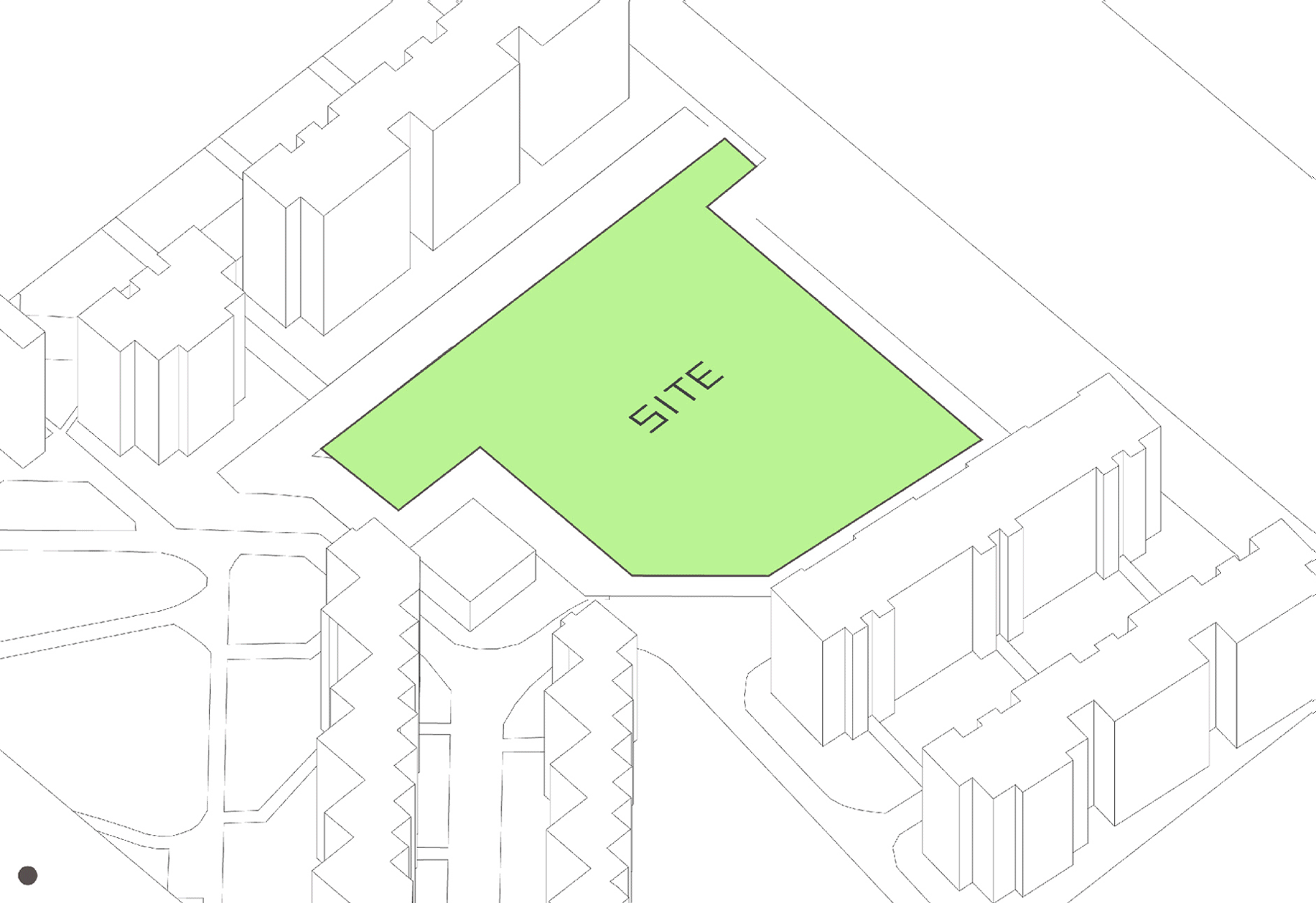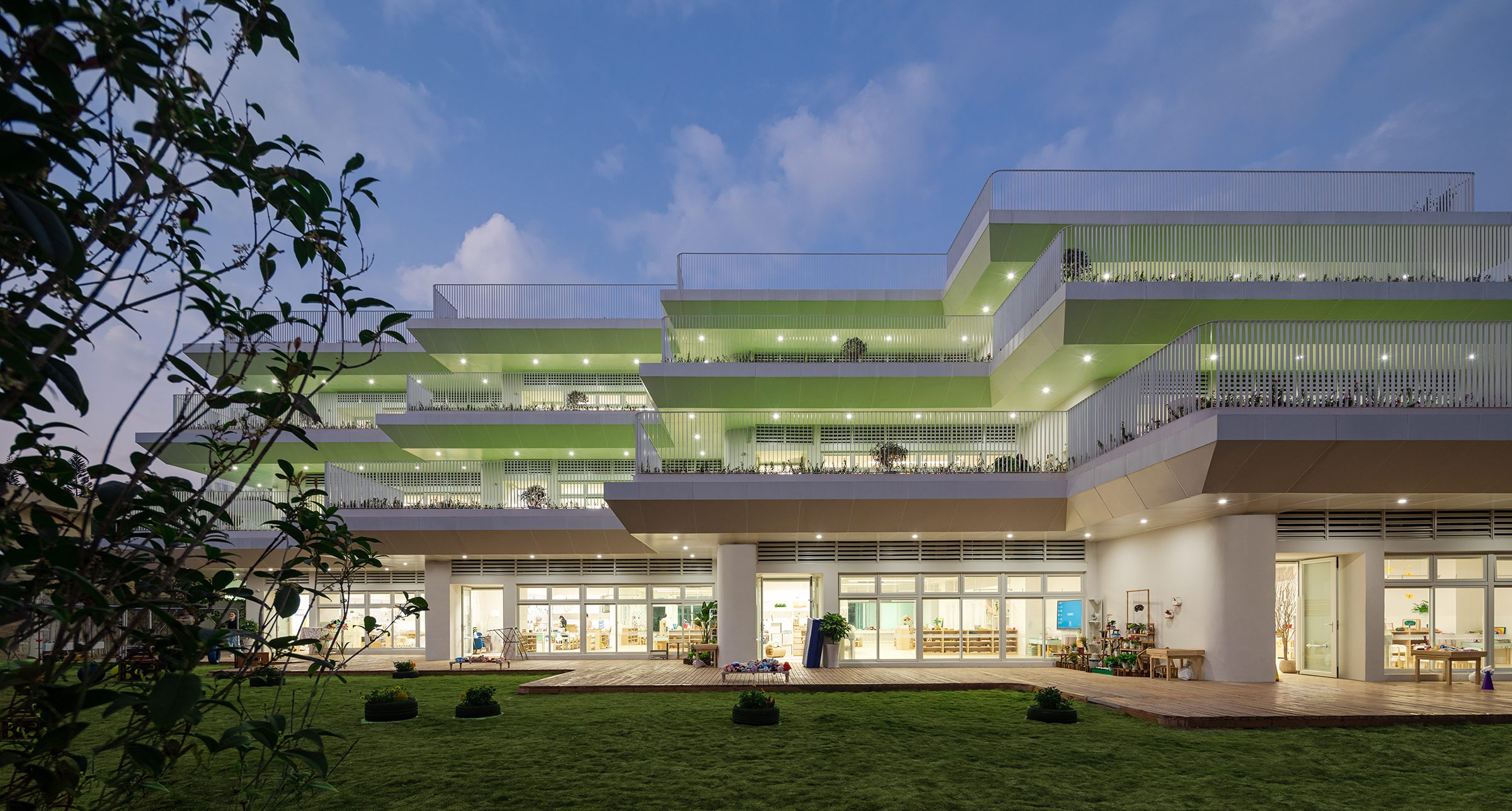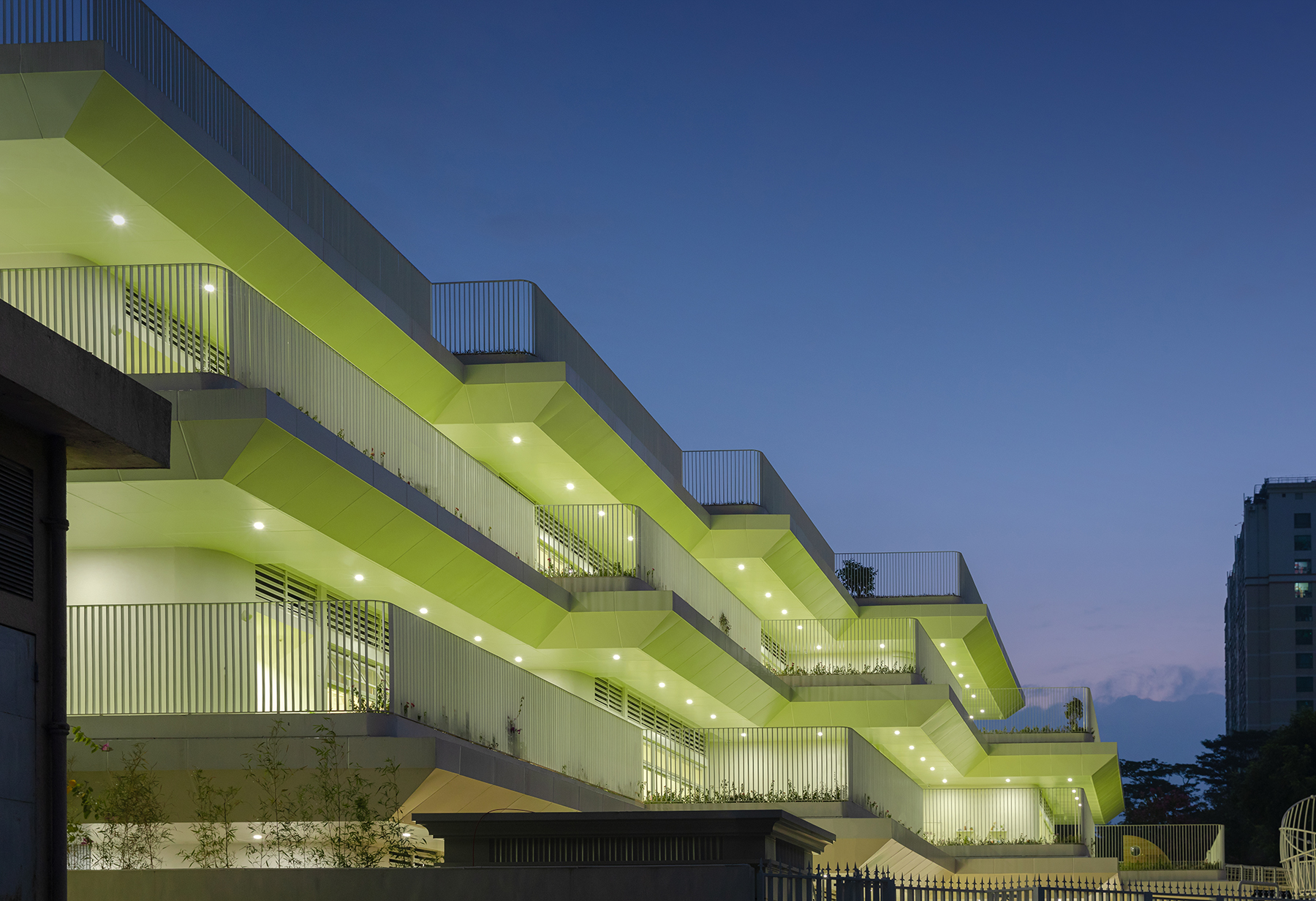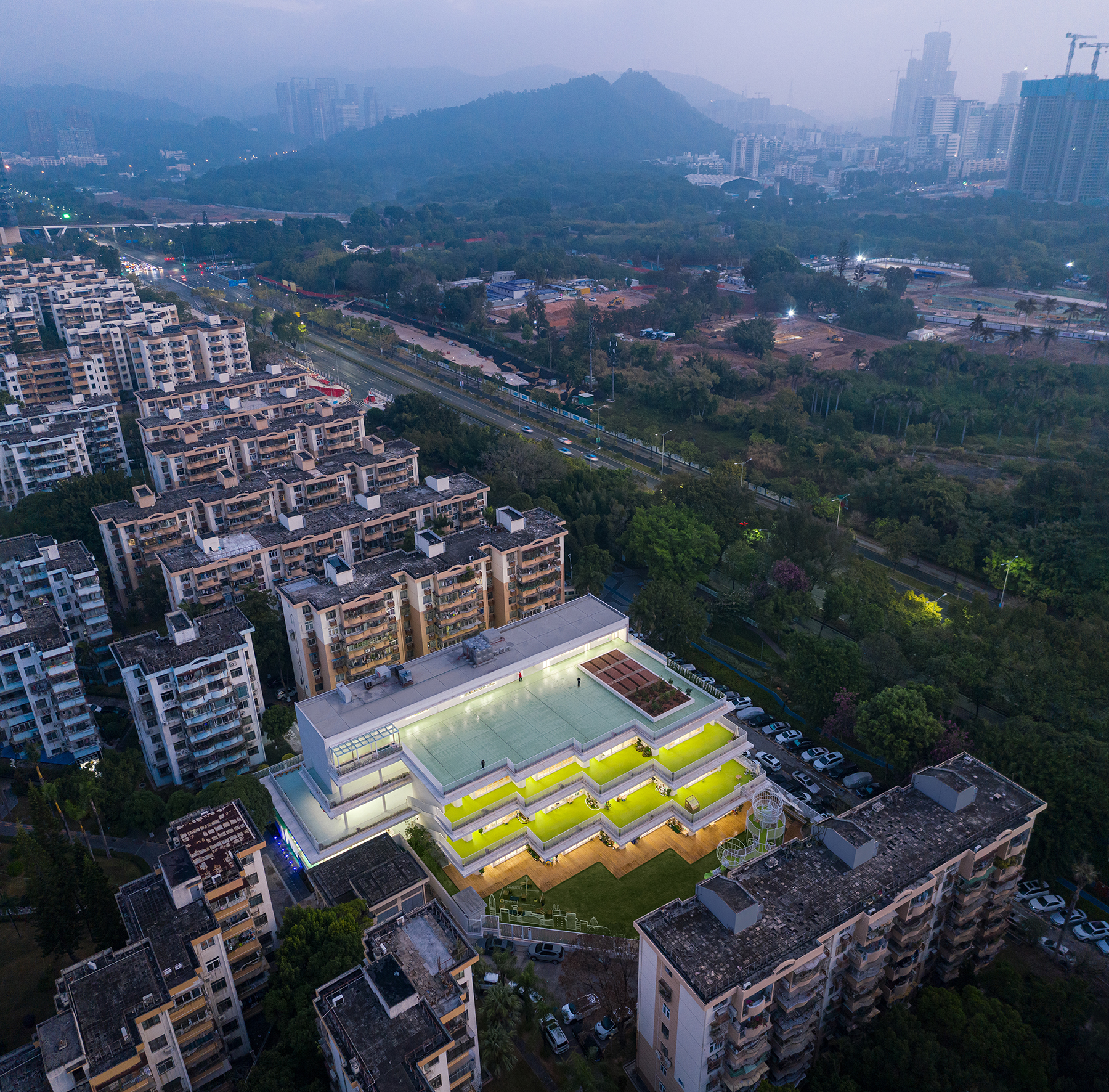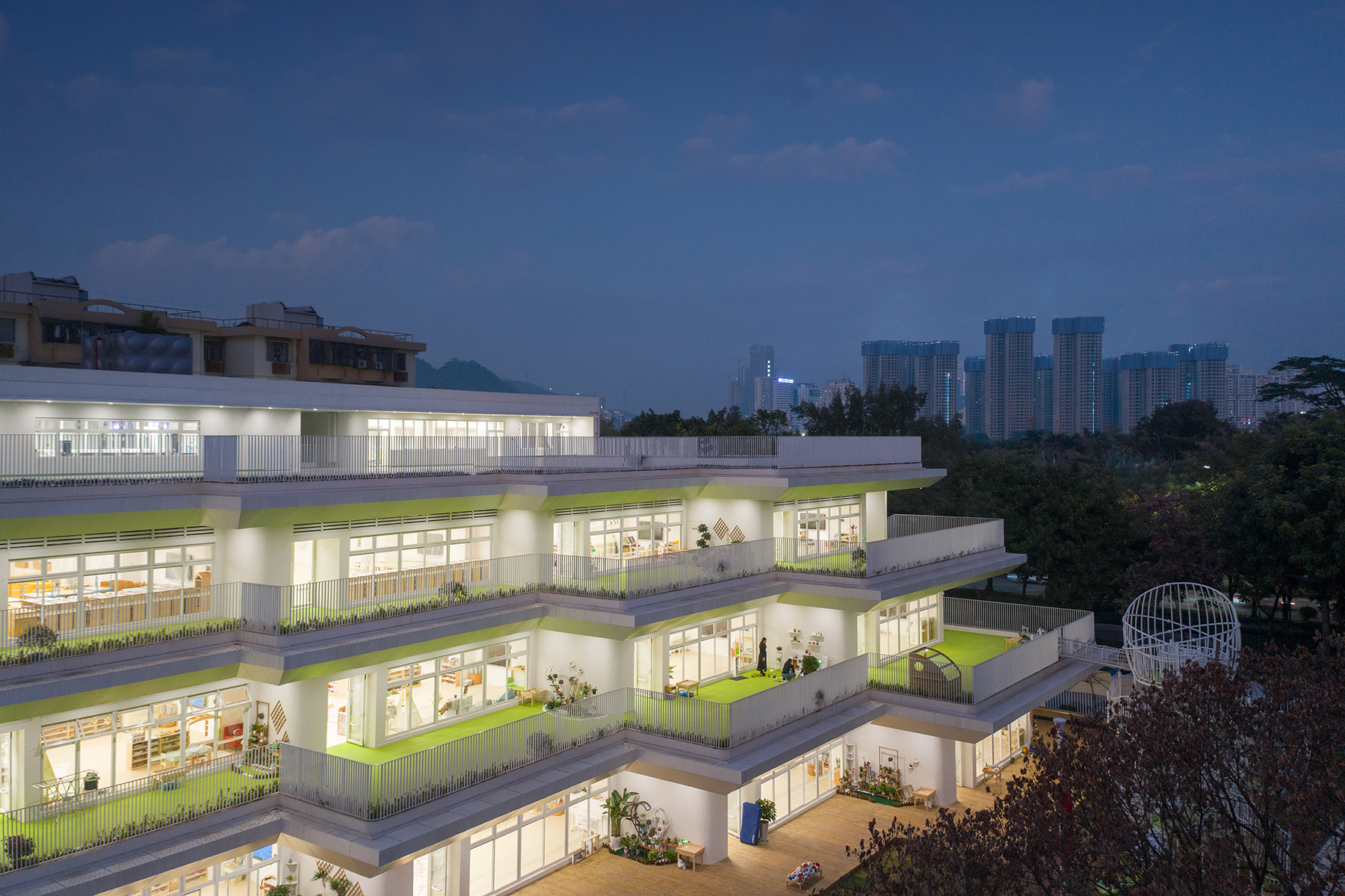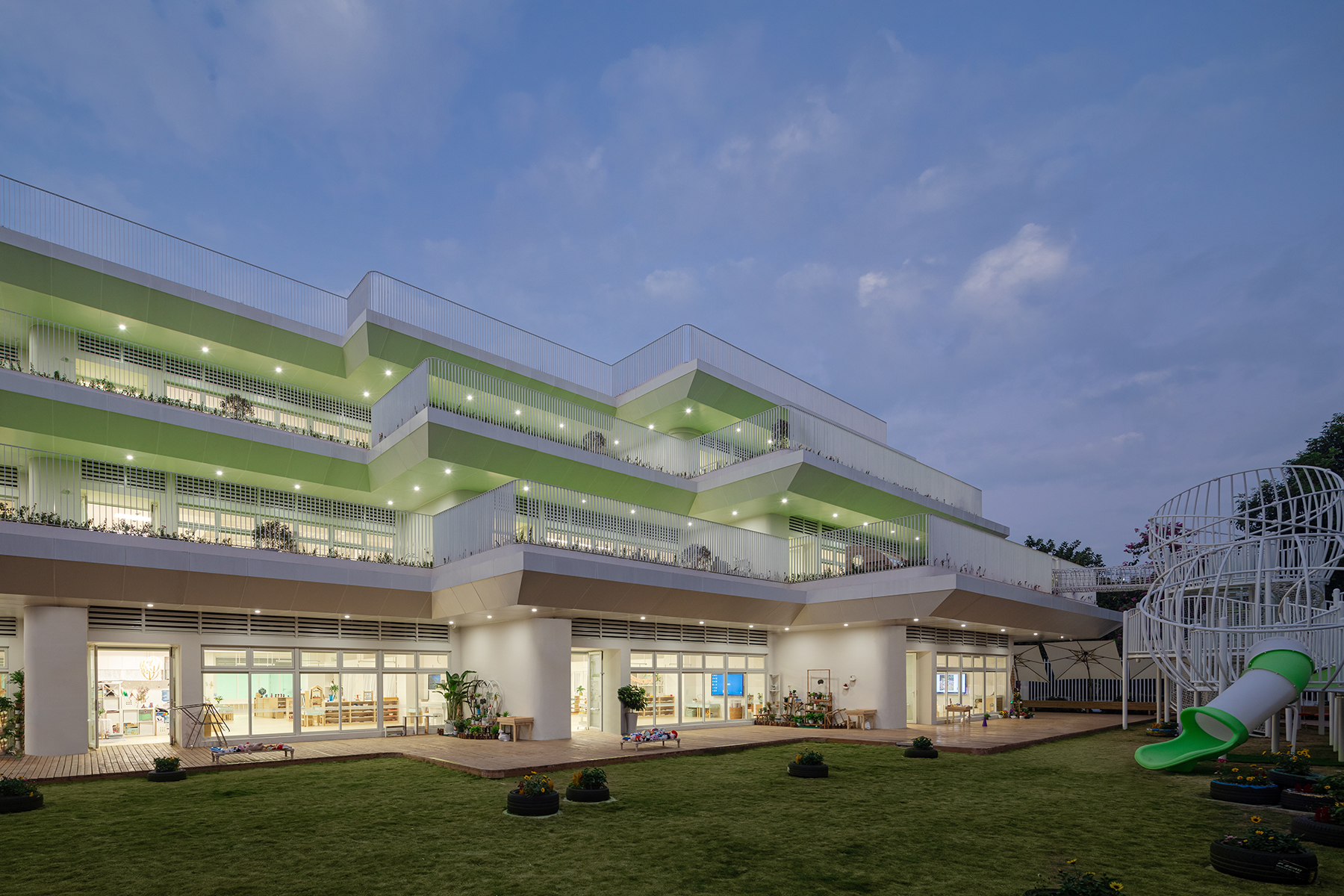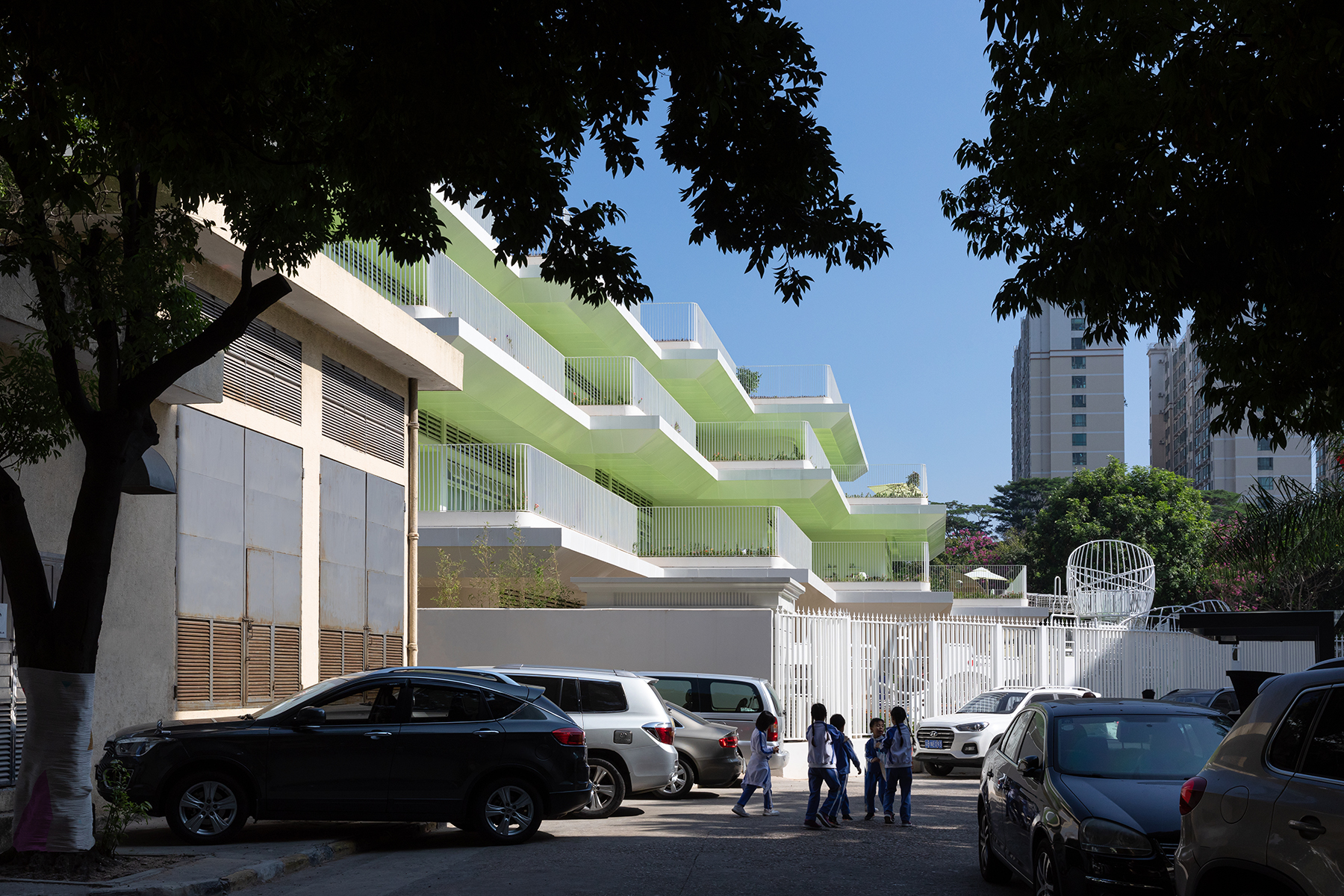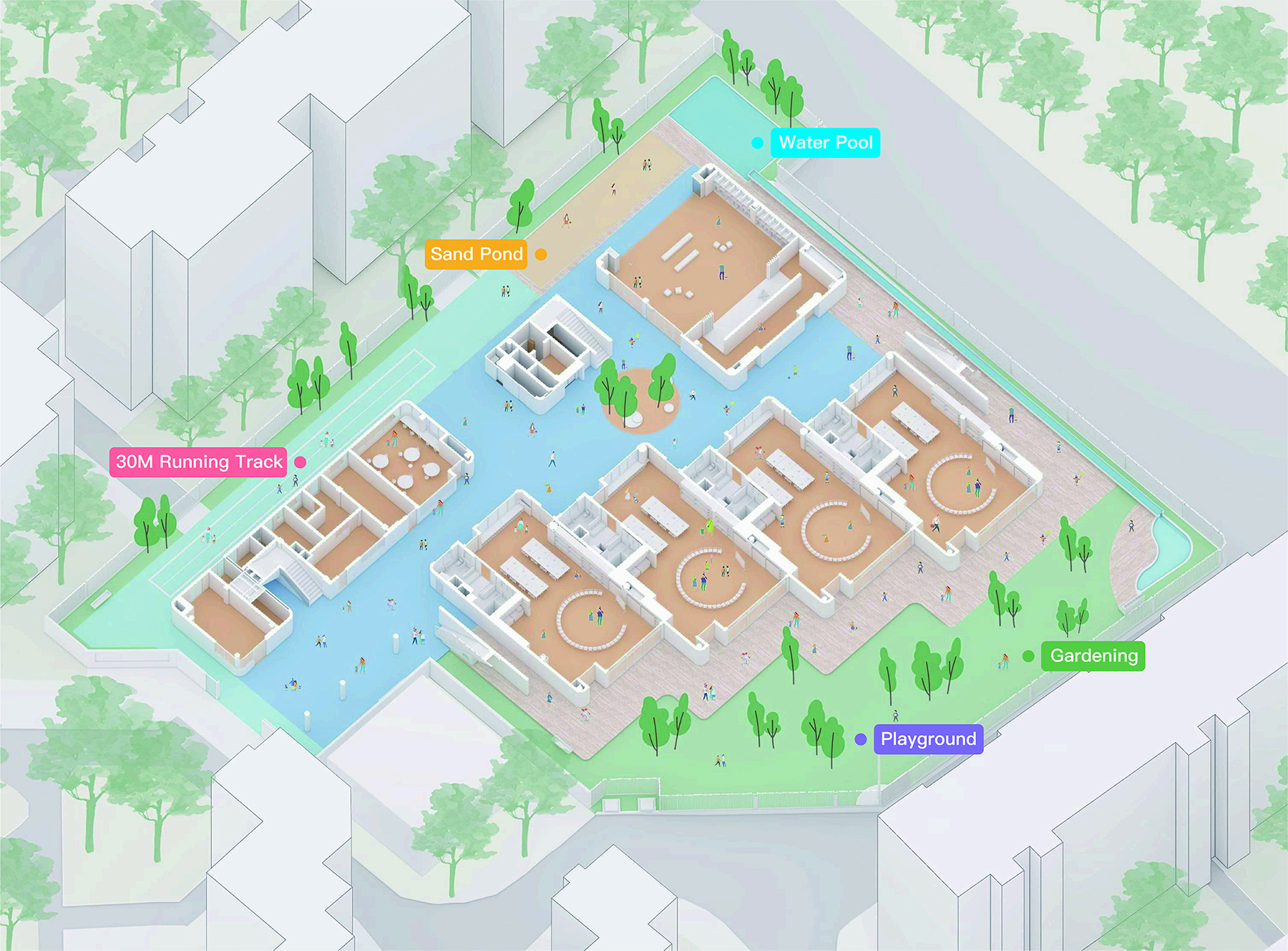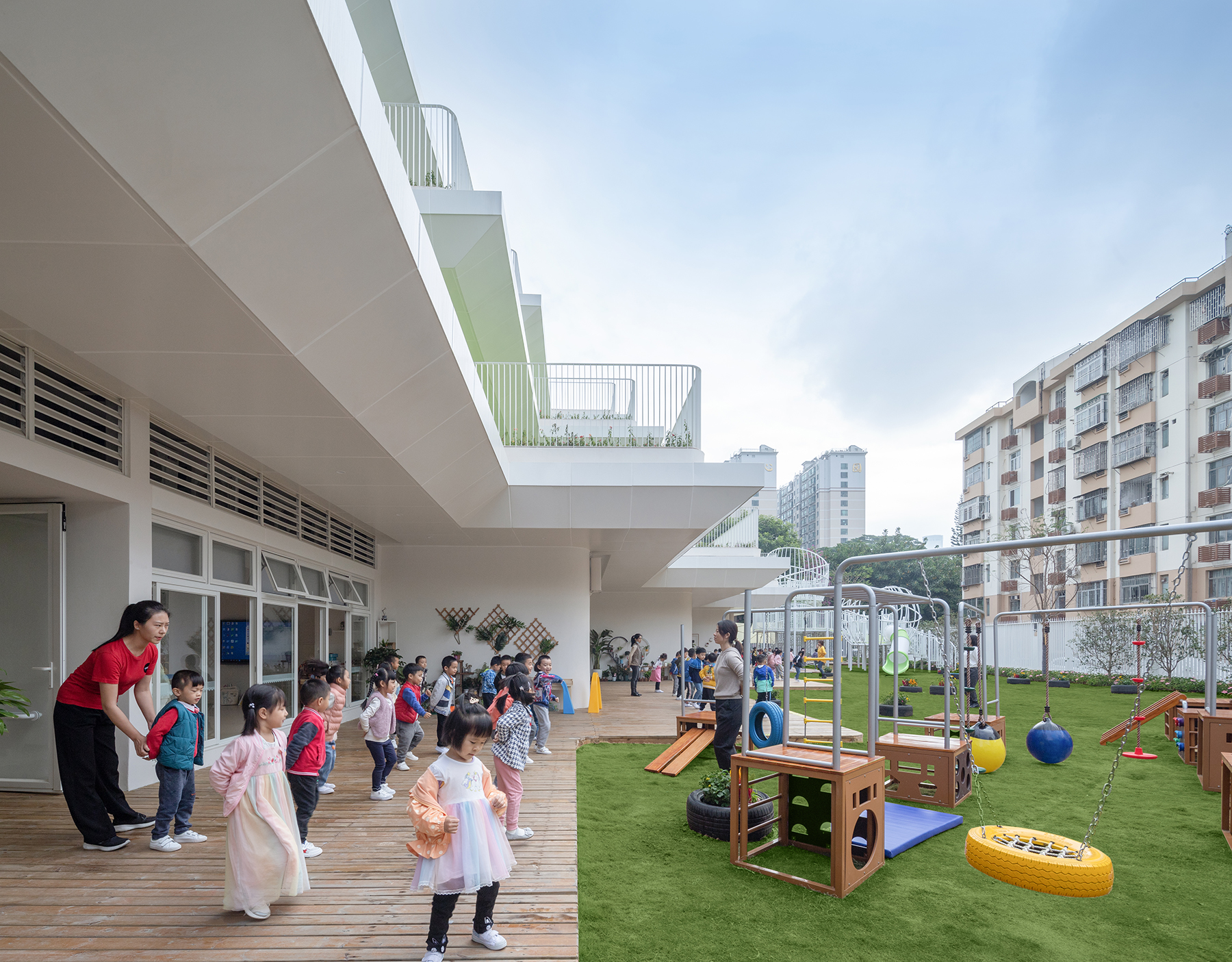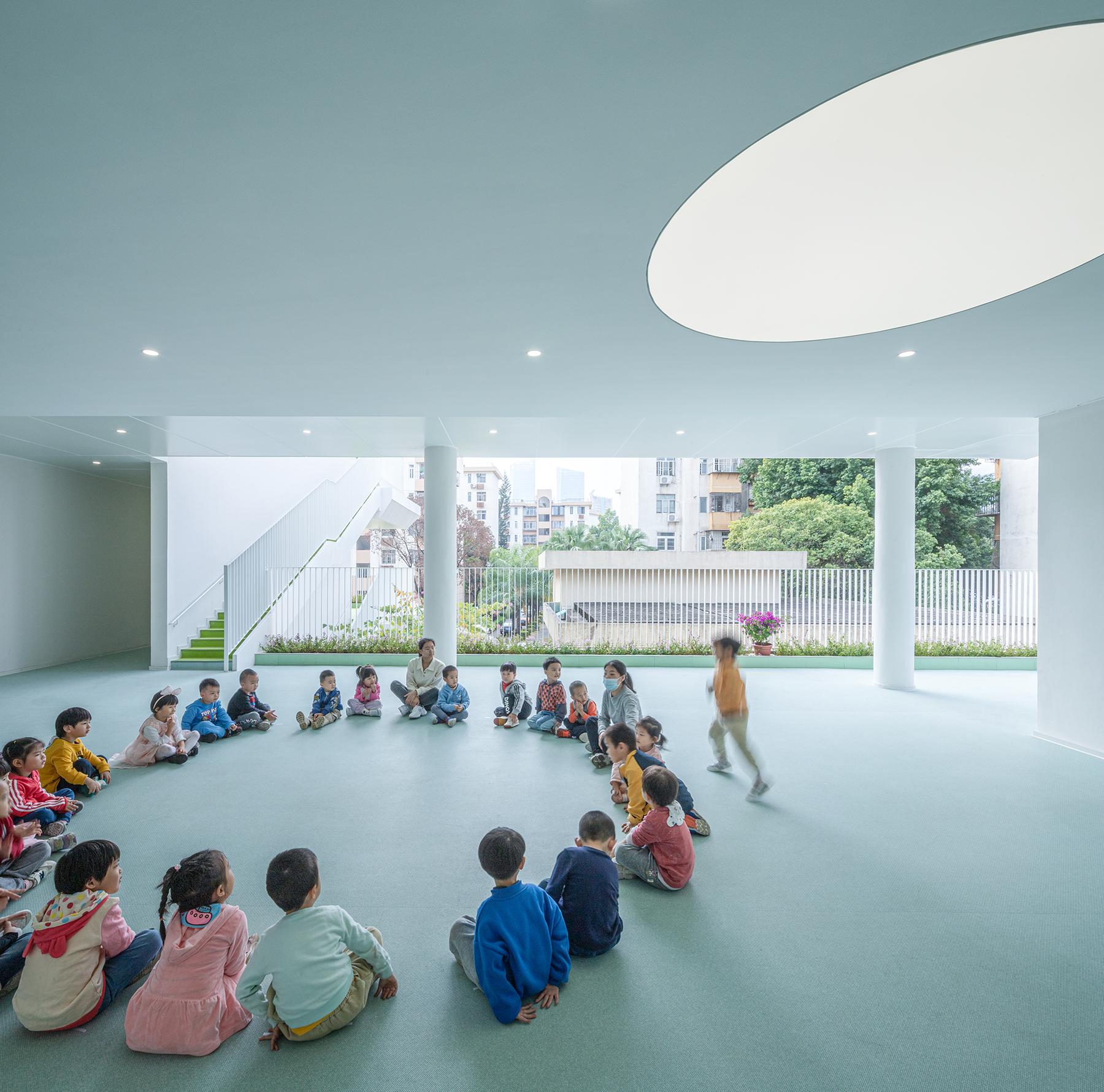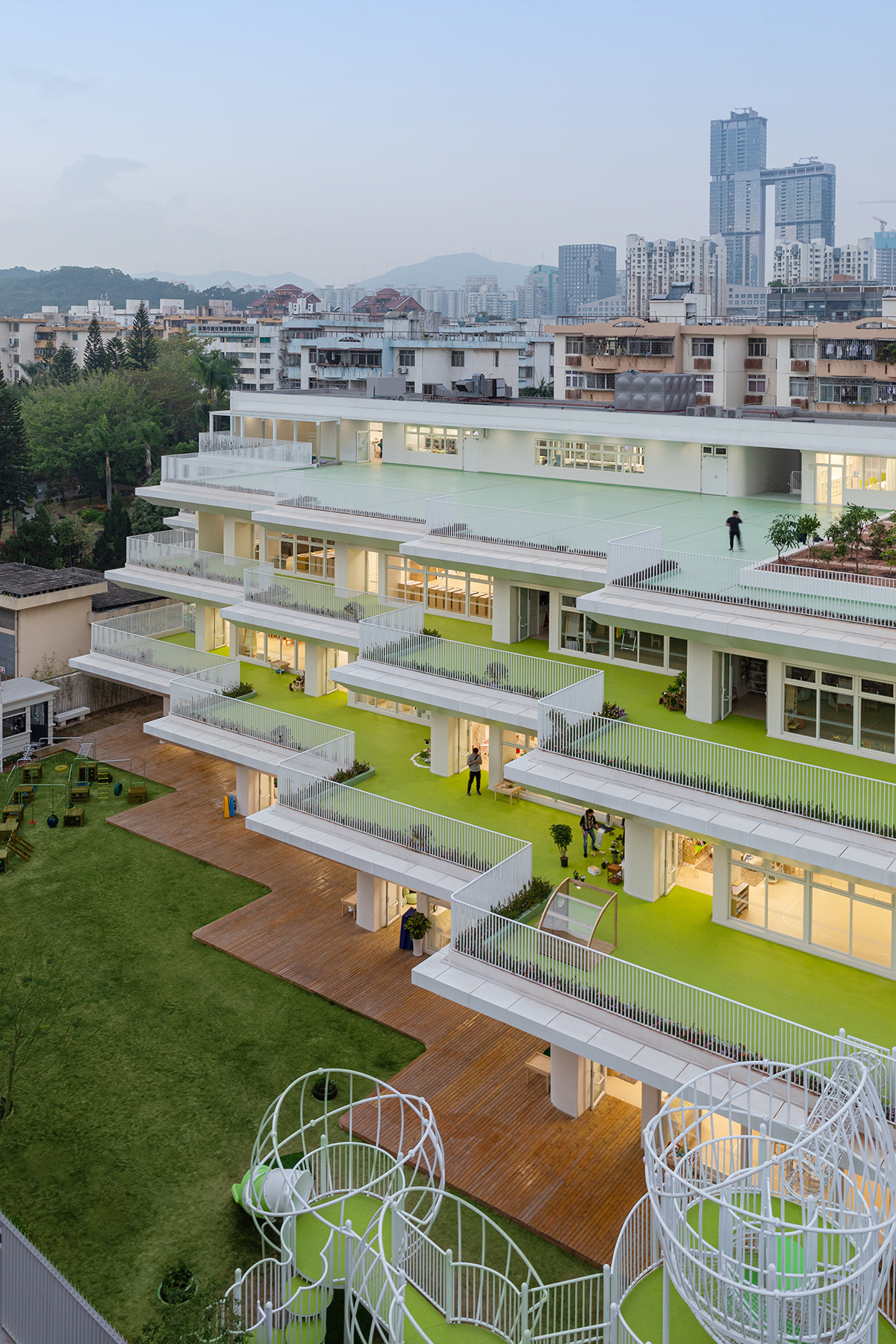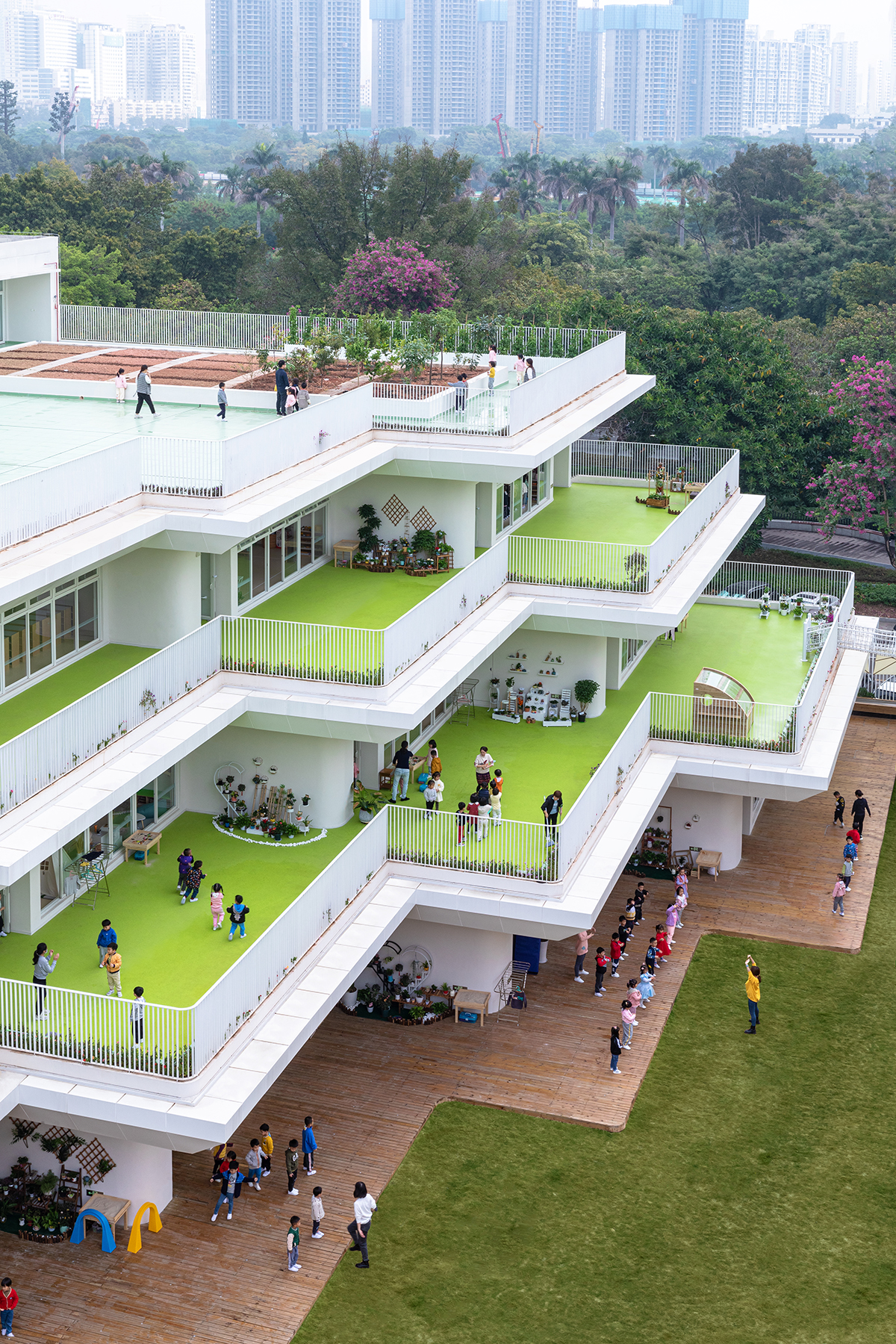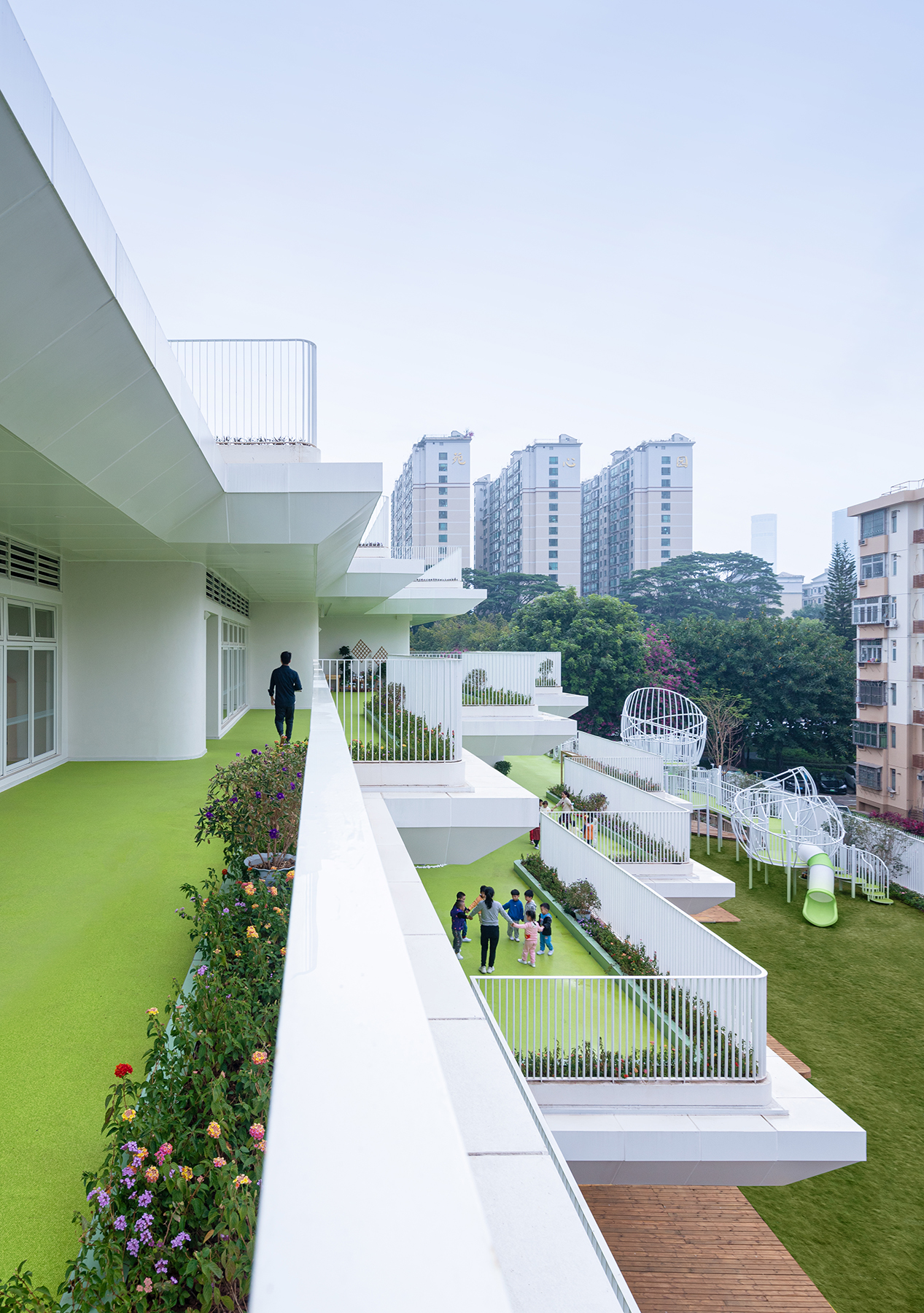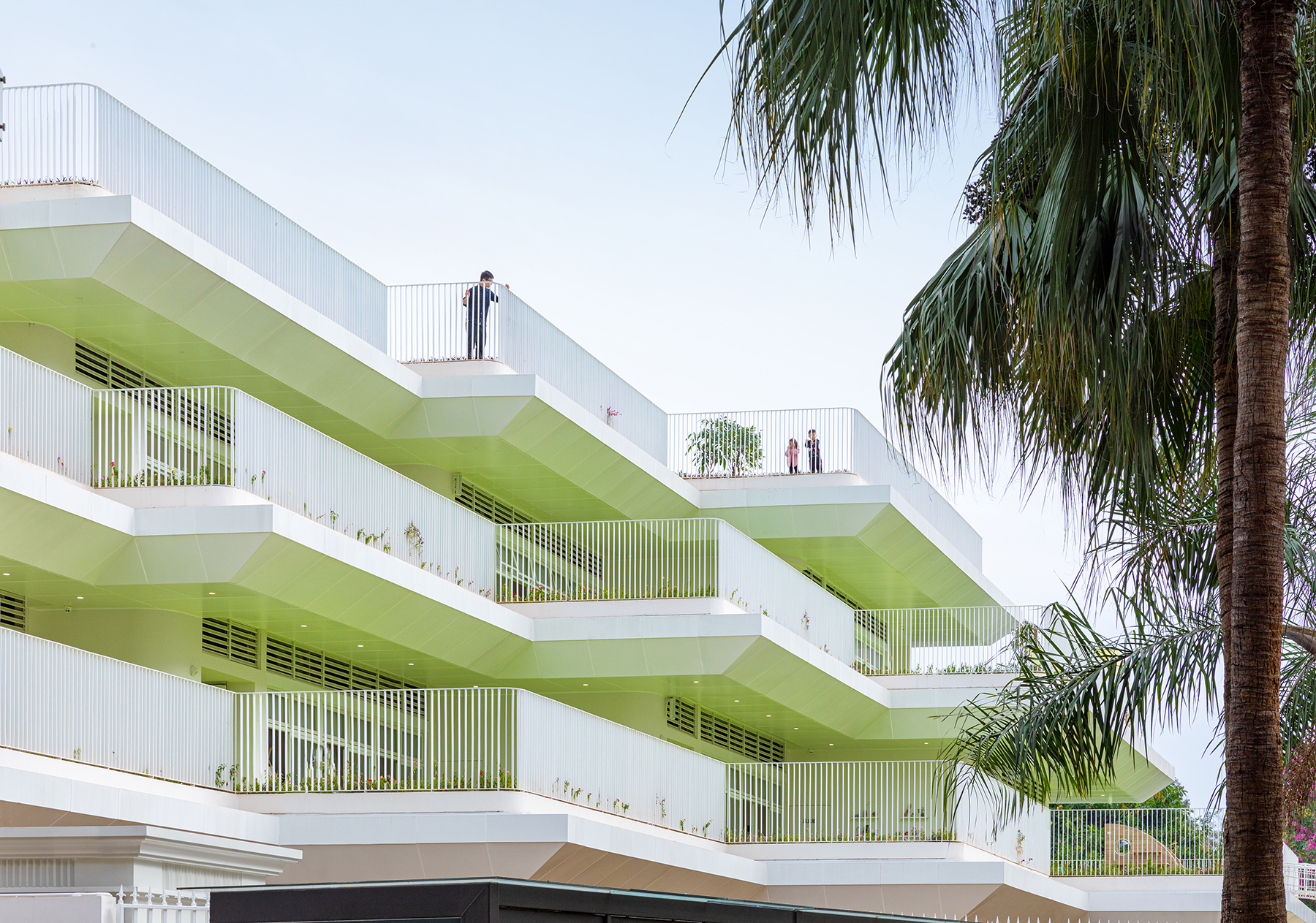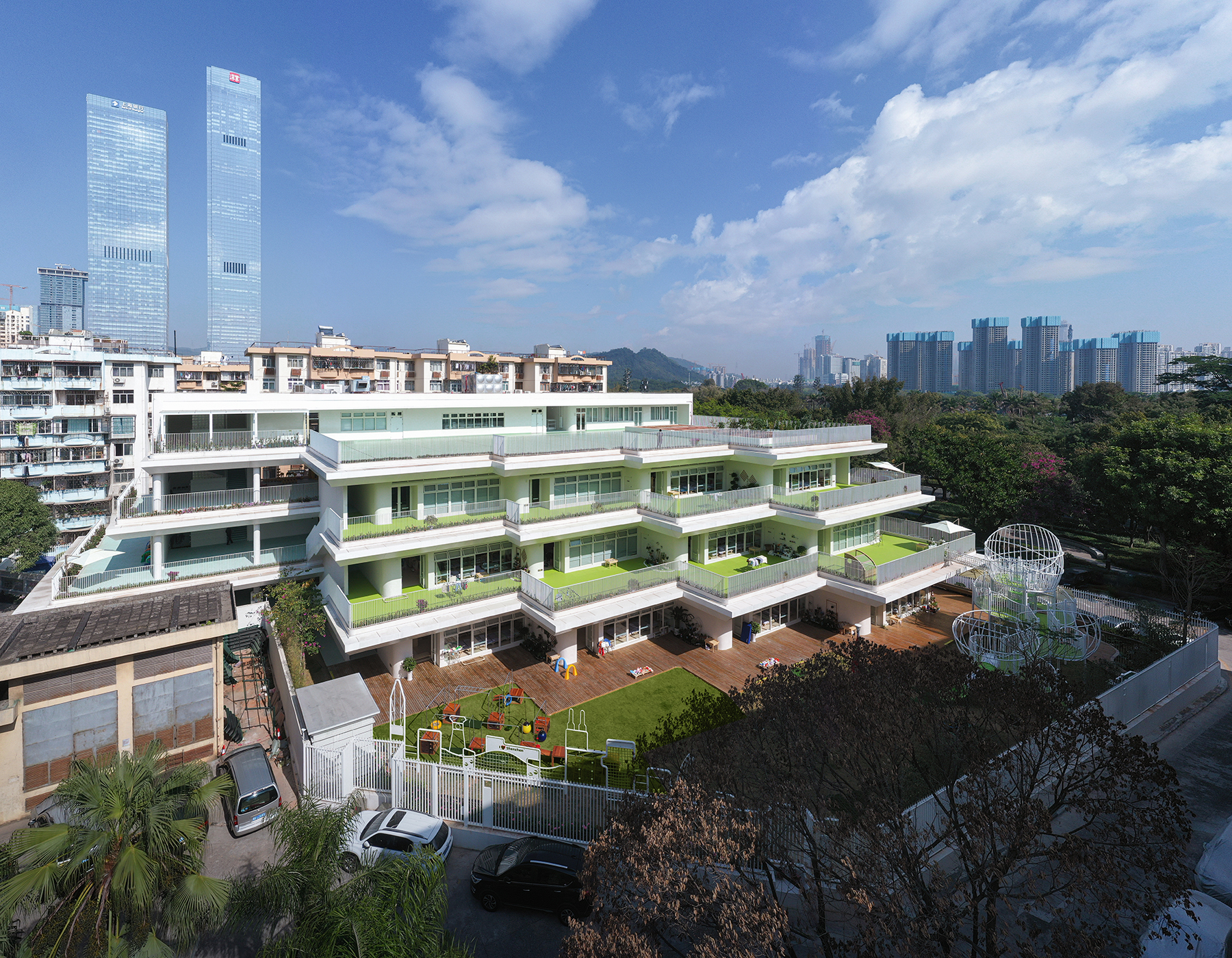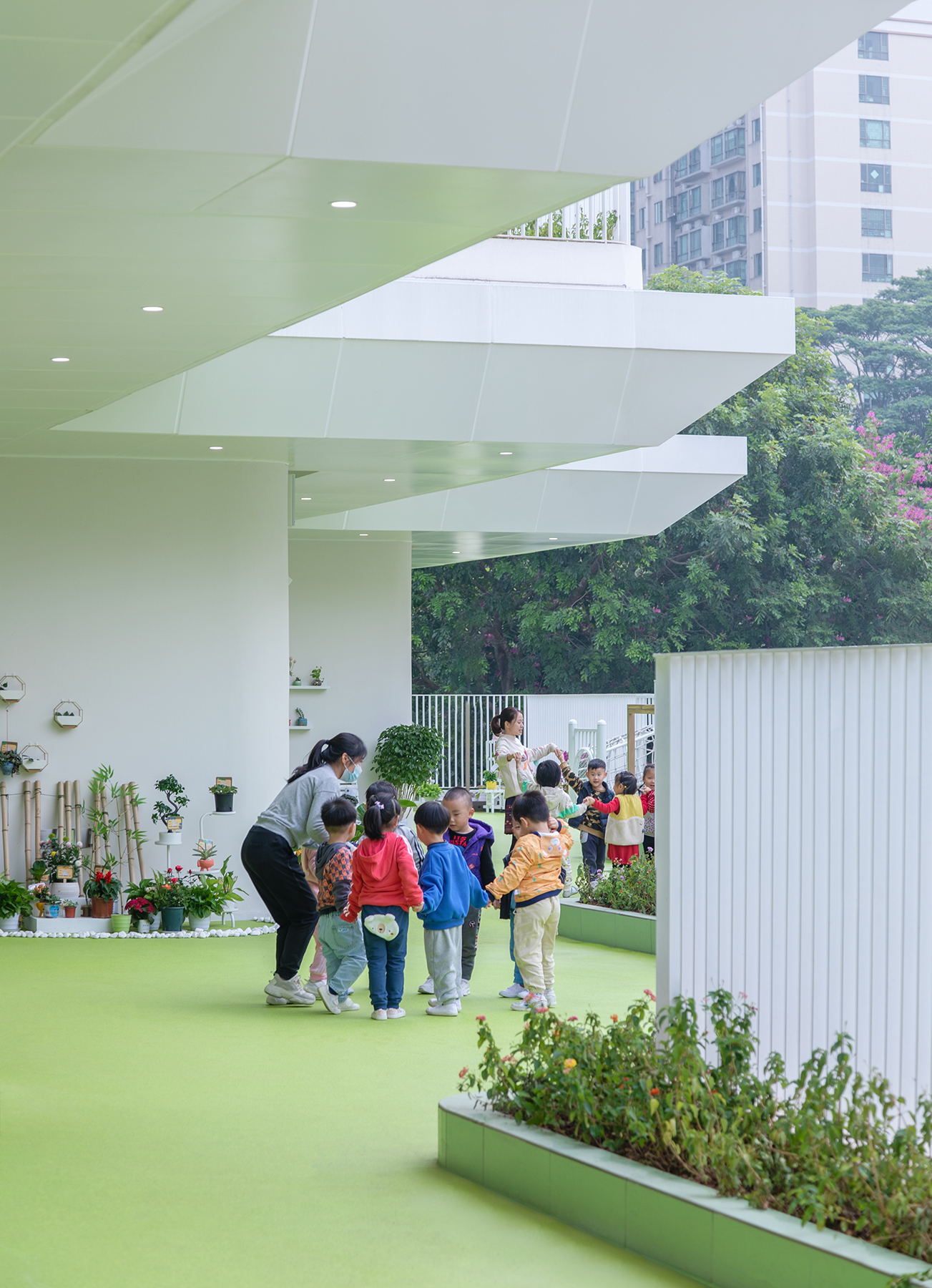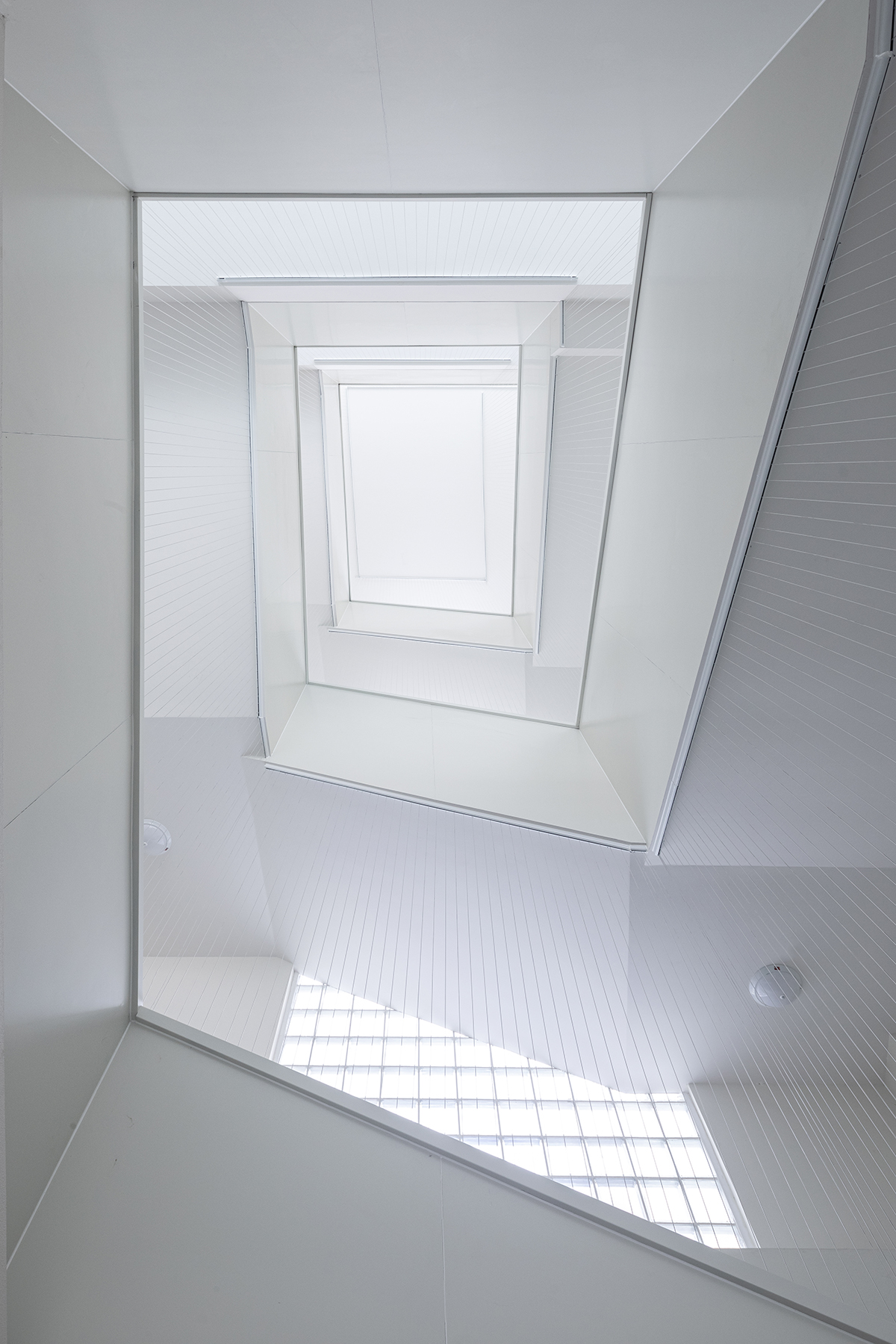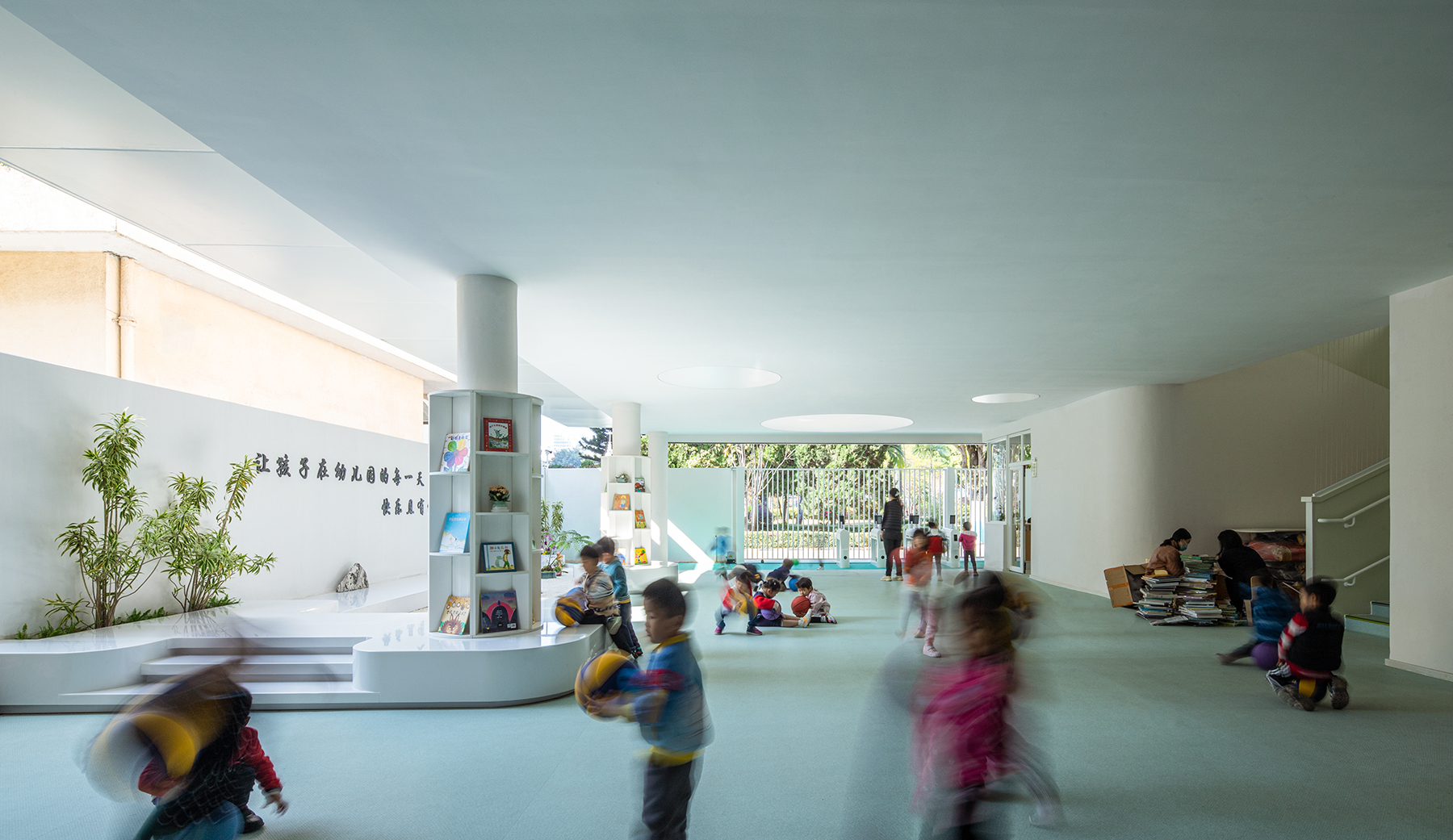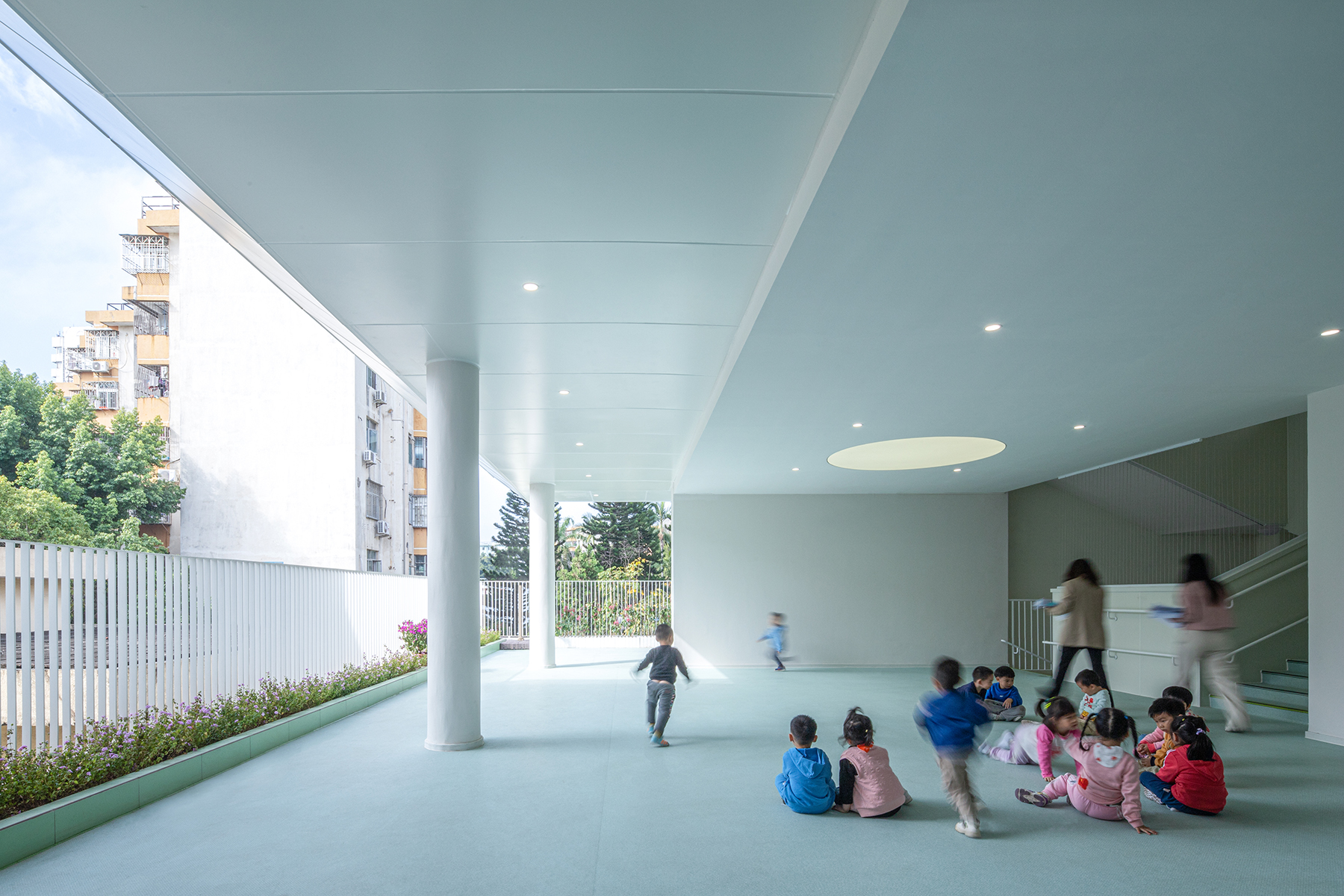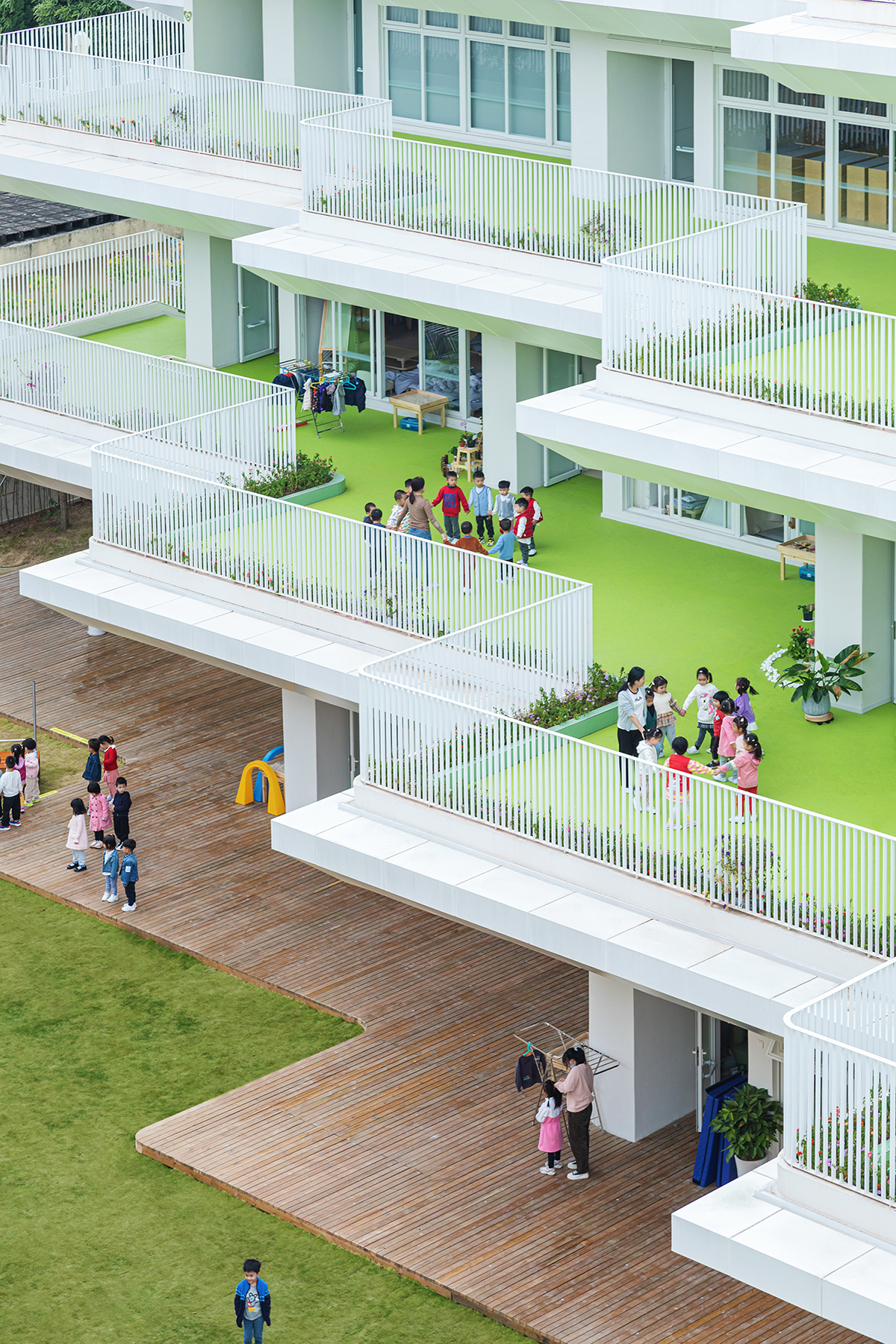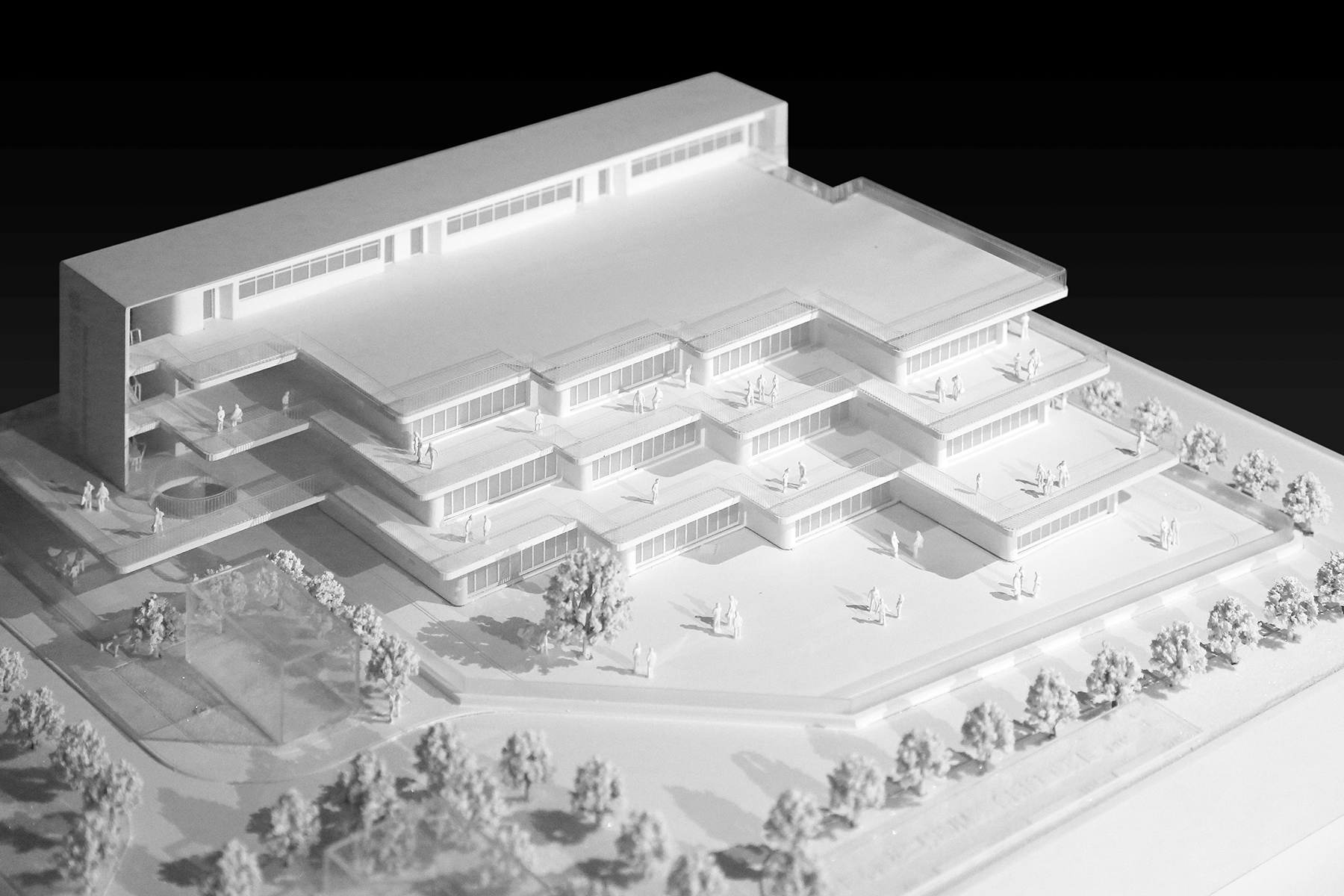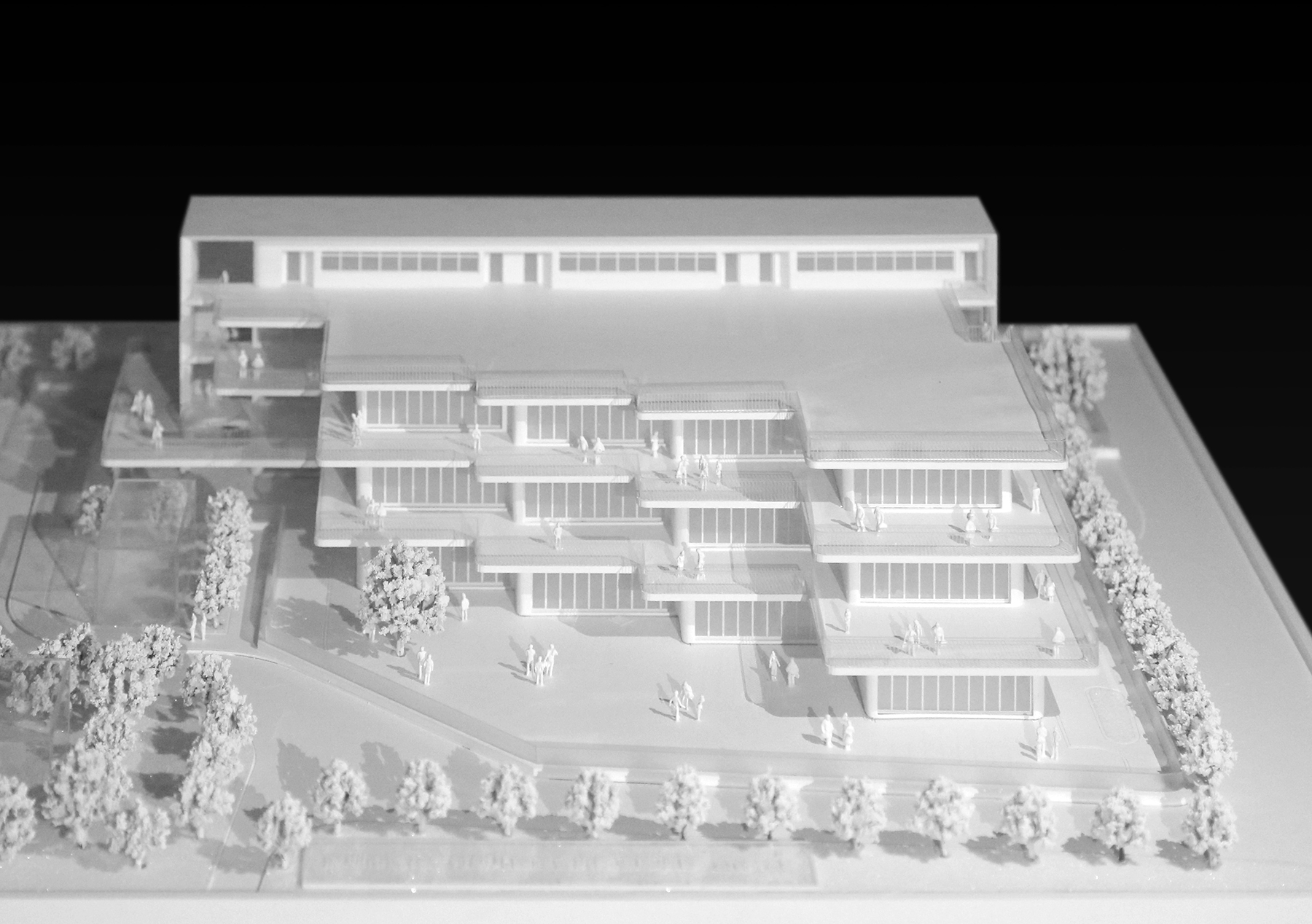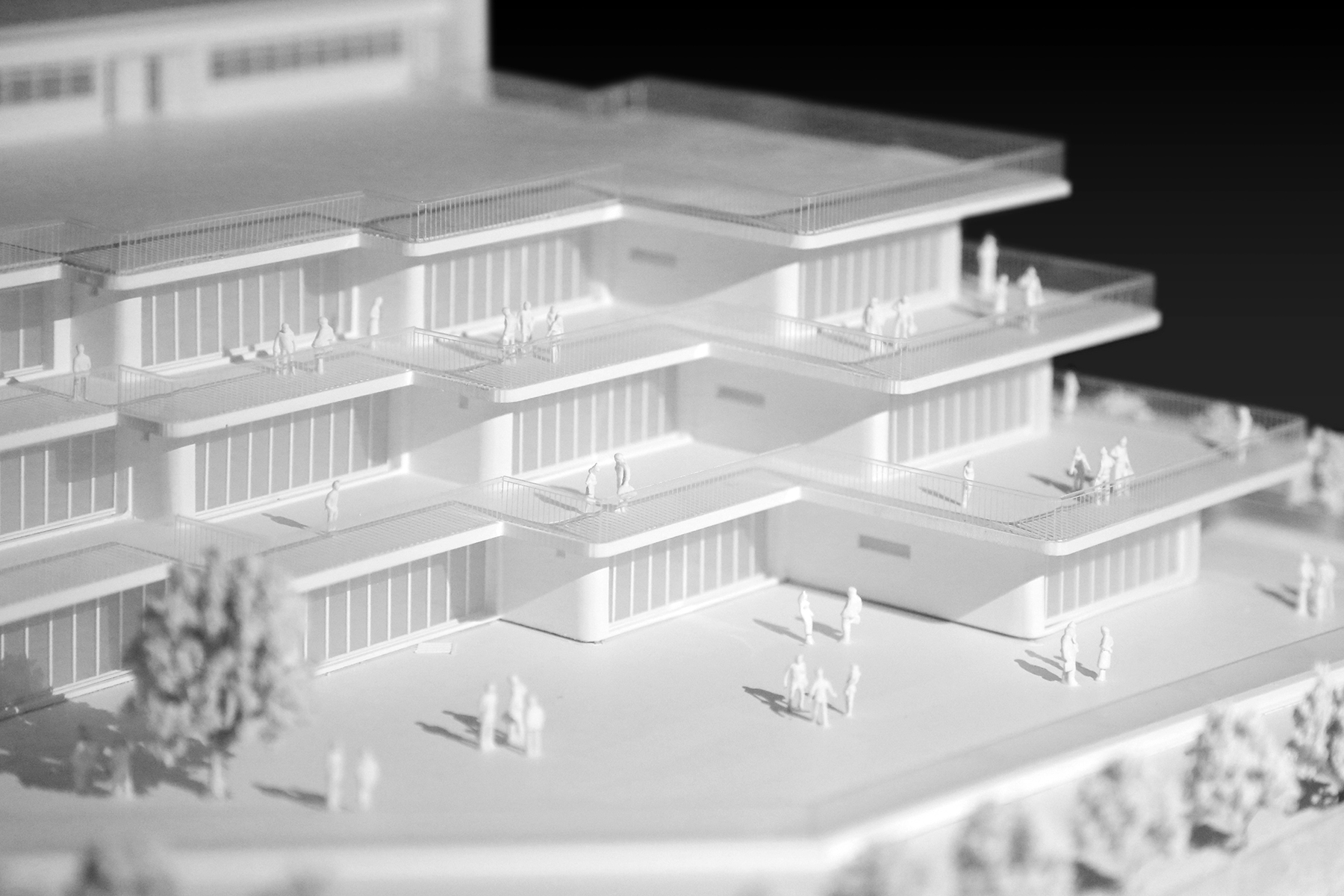Shenzhen is facing one of the most severe land use shortages in China. For the next five years, Shenzhen has only 224.64 sq.km. of land area available for new development – which is less than 10% of the total municipal land area; in addition, only 1% of the available land is dedicated for educational purposes.
Meanwhile, with the introduction of the two-child policy, Shenzhen maintains the highest population density and youth population nationwide. The high demand for school enrollment requires kindergartens to prioritize the number of classrooms, over playground space.
As we are commissioned to design the Shenzhen Lotus Kindergarten, we cannot stop reflecting upon what a good environment for children should be – and as far as we are concerned, with the premise to meet the institutional demands, “a large enough playground” is still the most important factor for kindergarten design.
The site is located on an irregular plot in Lotus Village, facing the main road in the east and surrounded by high-dense residential buildings on the other three sides. For a kindergarten of 12 classes, the site is too narrow to accommodate a playground with a 200-meter runway. In order to solve this issue, we first transformed the entire site plan into a three-dimensional grid of 12m×12m×3m, the size of a standard classroom. Then, according to the calculation of daylight analysis of the surrounding residential buildings, the terraces are set back from south to north to create a series of semi-outdoor playgrounds. This layout not only minimizes the mutual interference between the city and the campus, but also maximizes the total area of the playgrounds. On the same level, every terrace and indoor corridor are continuous as a dynamic loop trail surrounding the classrooms.
The main building consists of classroom units on the south side and service units on the north side. In the middle is a visually transparent multifunctional public space, as the main street of the community. On the ground floor, the central gallery, concert hall, 30-meter running track, and 25-meter water tank with sandpit are connected into an open teaching space dedicated to Art, Music, PE and Handcraft classes. The central hall on the second and third floors is a flowing space full of sunlight and natural wind. There are four view frame spaces facing the surrounding green landscape, which serve as extensions of the classrooms. It is very interesting that teachers and students seem to spend more time in these spaces, running, chasing, singing, and playing games. In this sense, classrooms, corridors, terraces, halls and many spaces without a name together generate a magic cube of space for children.

